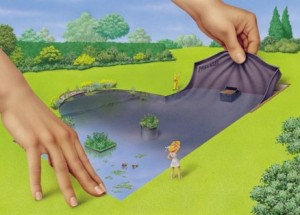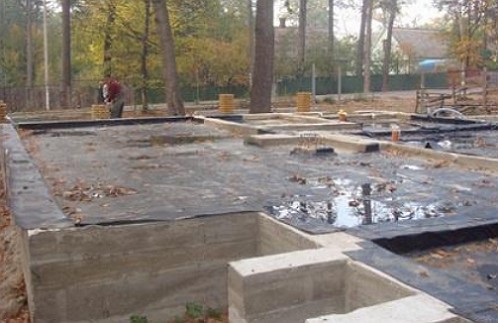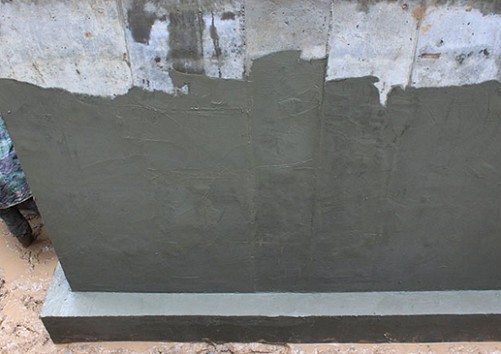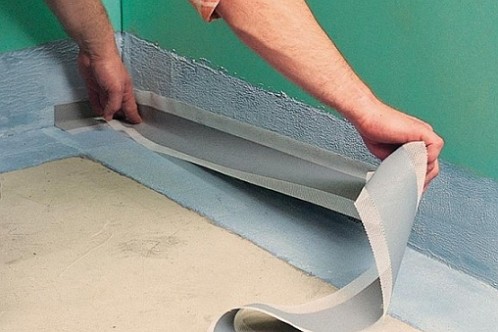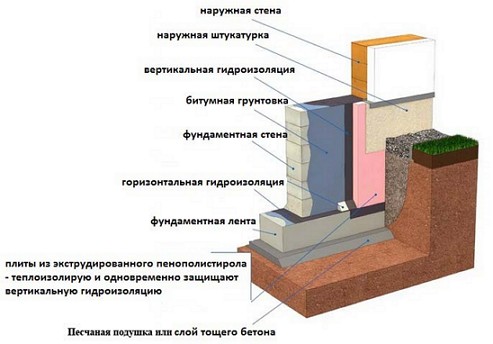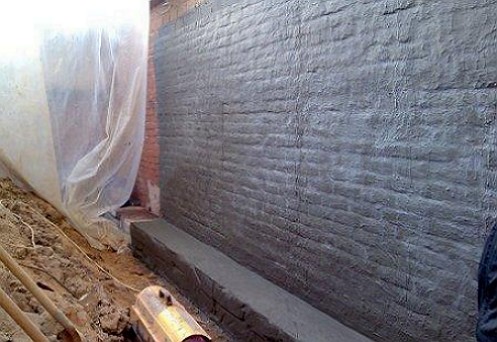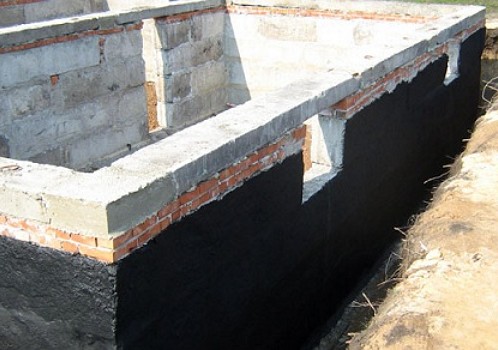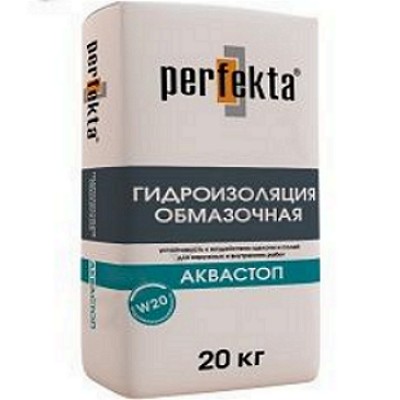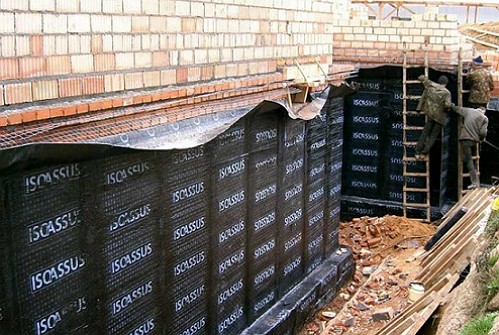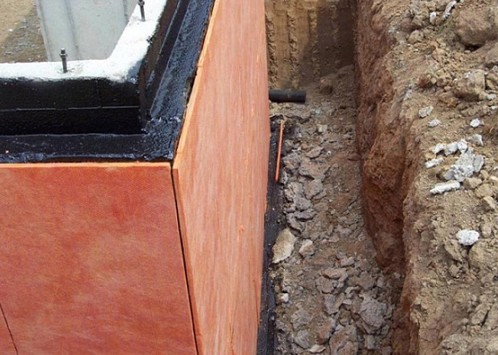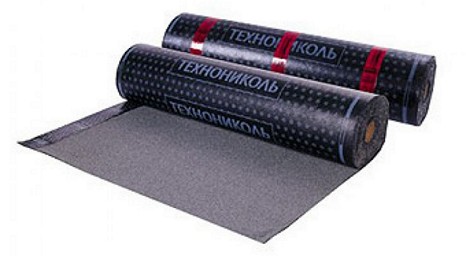It is for certain known that with a constant impact on building structures of water or precipitation, the construction will not last long. Solving the "world" problem will help a reliable protection of structures called waterproofing. Historically established traditions of the installation of waterproofing measures with the use of a roll roofing felt go into the background, giving way to more sophisticated materials.
Content
Waterproofing is the protection of building structures
Waterproofing the foundation is to protect the structure from water penetration.
Waterproofing works are aimed at protecting the structure from exposure:
• Filter, drain or wash water
• aggressive liquid medium
• penetration of moisture.
Therefore, waterproofing the foundation can be called the most significant and technologically sound stage of construction.
For waterproofing works, various materials are used, because the waterproofing process involves processing:
• formed during the pouring of a monolithic construction of the foundation of "cold seams"
• appeared in the process of shrinkage of soil on the foundation of interblock microcracks and seams of any degree of opening.
Thus, the treatment and the process of waterproofing can be practiced by means of drainage or active hydraulic insulation. Recall that the device of waterproofing the foundation is made at the stage of its erection, as a separate technological stage.
Types of waterproofing works
According to the classification and composition of waterproofing materials, they are divided into polymeric and polycemeric. According to the method of applying the material, the materials are subdivided: rolled, impregnated, lubricating. According to the waterproofing function, the materials are:
• waterproofing
• water repellent
• Drying
• sanitizing.
Therefore, for carrying out self-waterproofing works of the foundation, the following types of waterproofing are used:
• lubricating type
• okleychnuyu
• Penetrating type
• Mountable.
Naturally, for each type of waterproofing, special materials are used and used, which differ in the principle of action and application during work.
coating waterproofing
The most ancient and proven waterproofing is an oil-based waterproofing.
Waterproofing of the lubricating type is carried out in the form of a multilayer coating. For these purposes, hot or cold solutions of polymer lacquers with corrosion protection are used. The multilayer coating obtained during the processing creates a reliable and durable waterproofing layer.
The most popular materials for vertical waterproofing of foundations are hot bitumen-polymer coatings and curing materials without heating. For horizontal waterproofing of the foundation, hot or cold plaster solutions asphalt, as well as mastics with a mechanized application process, can be called the most popular.
The scope of the lubricating waterproofing is extensive: it protects the surface outside and inside the basement of the house (capillary moisture). In this case, the soil water pressure for draining soil types can reach 0.2 atm.
Currently, the best result of waterproofing with use is the use of bitumen modified with APP polymer. This is atactic polypropylene, less sensitive to the aging process than SBS (styrene-butadiene-styrene).
)
waterproofing
Waterproofing oklechnogo type, as well as obmazochnuyu can safely be called dying out dinosaurs. In the old manner, waterproofing pasting is carried out by manually sticking roll materials in several protective layers. In this case, it is necessary to protect the surface with screeds. Unlike the waterproofing of the lubricating type, this type has a high crack resistance, which allows the introduction of polymer films and plastics into the application.
penetrating waterproofing
The principle of waterproofing penetration type is based on active chemical reactions, as a result of which the chemical components of dry mixtures penetrate into the internal structure of the concrete base. The salts of complex composition obtained in the course of chemical reactions create formations in the form of crystals. The expanding network of crystals fills the microcracks and blocks the passage of moisture and water.
Waterproofing of the accretive type can be called the most durable, because the life of this waterproofing will depend on the life of the most concrete structure of the foundation or wall. Waterproofing penetrant type eliminates the joint joints and seams construction of the foundation and walls.
)
For the device with the hands of the waterproofing to be installed, special elements are used: profile tapes and metal sheets, which are attached to the construction of the foundation for the installation connections. More modern mounted waterproofing is represented by the technology of sealing the surface coating and expansion joints with the use of elitene-propylene rubber.
For the waterproofing of the foundation walls use the following materials:
• Rolled geosynthetic materials and membranes
• materials for application in a liquid state
• dry mixtures that have a penetrating effect
• Mineral materials based on binder and bentonite components.
The construction industry today offers more effective waterproofing materials, so it does not hurt to watch this video.
)
Waterproofing the walls or foundation of the house can be done with your own hands.
How to waterproof the foundation
To make a waterproofing of the foundation is as simple as erecting the foundation itself. But when carrying out waterproofing of the foundation yourself, in some cases there is a need for a drainage system. The drainage system is necessary in the case when the depth of the foundation of the house is lower than the level of the flow of groundwater. In addition to the emerging need for a drainage system, it is necessary to take into account the type of foundation.
So, for example, with the waterproofing of a monolithic tile foundation, a combination of traditional vertical and horizontal waterproofing is possible.
As a waterproofing columnar and screw foundations, it is recommended to use roll-bitumen protection reinforced with fiberglass, fiberglass or polyester.
However, the proposed options for waterproofing are recommendatory in nature.


